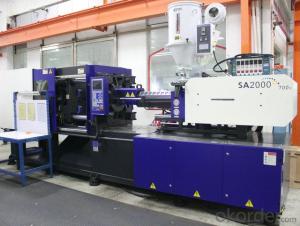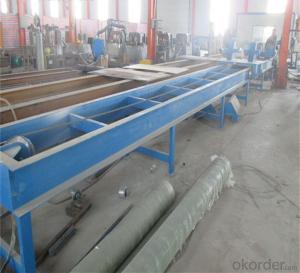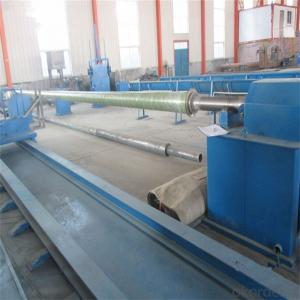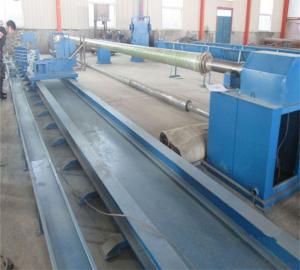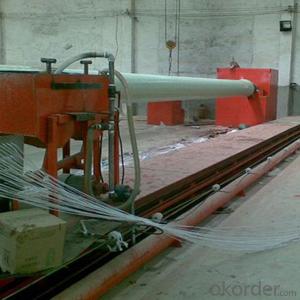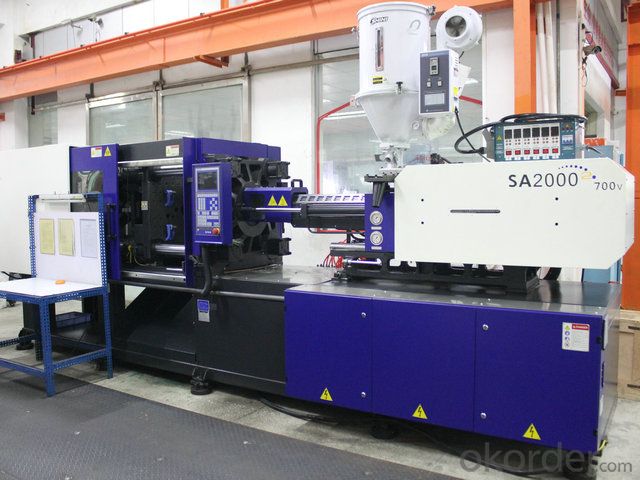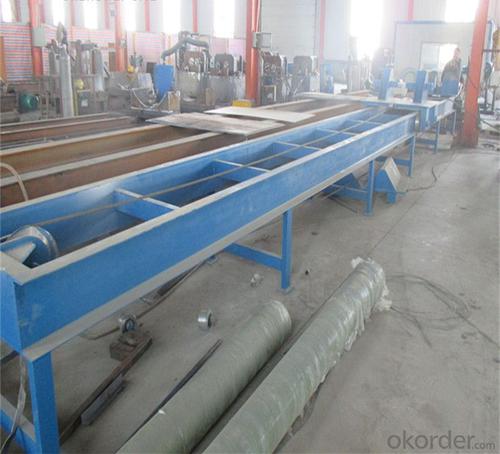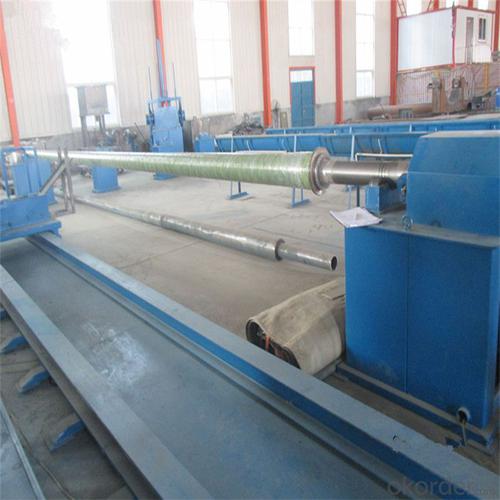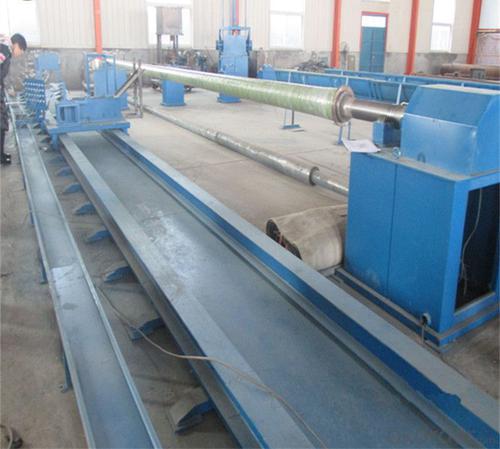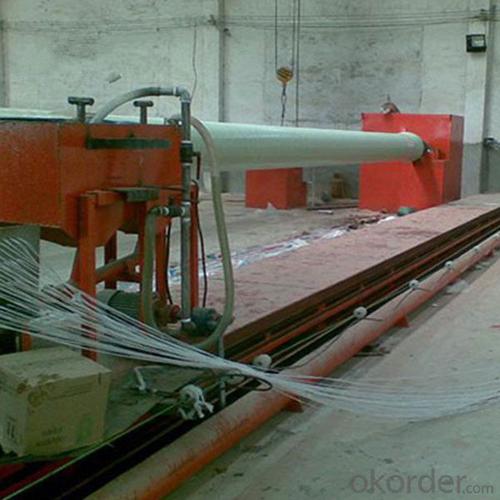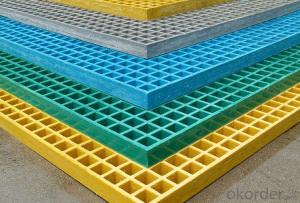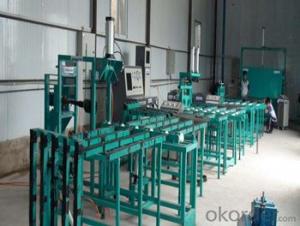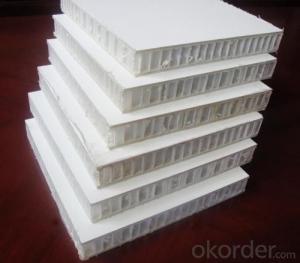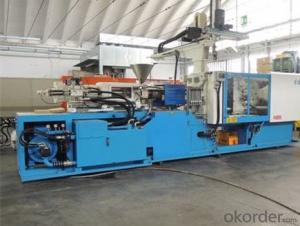FRP Pultrusion Profiles - Anti-Fatigue High-Quality FRP Pultruded Grating with New Design
- Loading Port:
- Tianjin
- Payment Terms:
- TT OR LC
- Min Order Qty:
- 1 m.t.
- Supply Capability:
- 50000 m.t./month
OKorder Service Pledge
OKorder Financial Service
You Might Also Like
PRODUCT DESCRIPTION
Pultruded grating is made by a particular assembly process, which using “I” shape as its main load-bearing and special rod to go through the bearing bar. Pultruded grating include the standard grating and the custom grating, the custom grating can be designed to meet customer’s requirement or special using condition by changing the shape, size and space of the bearing bars, the surface can be covered with lozenge panel, grit panel, or added the anti-slippery sand directly.
FRP pultruded grating has the most characteristics of molded grating, but it has its distinct advantages, it has very high fiberglass content in the loading direction, so it has very high load capability, it has more superiority when used at wide span, so that the basic support will be decreased and the project cost will be reduced accordingly.
SPECIFICATION
Thickness (mm) | Bar width (mm) | Open space (mm) | Open rate (%) | Approx weight (kg/m |
25.4 | 15.2 | 22.8 | 60 | 13.2 |
25.4 | 15.2 | 15.2 | 50 | 15.9 |
25.4 | 15.2 | 10.1 | 40 | 18.5 |
25.4 | 40 | 10.8 | 21 | 14.5 |
38.1 | 15.2 | 22.8 | 60 | 15.8 |
38.1 | 15.2 | 15.2 | 50 | 19.1 |
38.1 | 15.2 | 10.1 | 40 | 22.4 |
50.8 | 25.4 | 25.4 | 50 | 16.6 |
50.8 | 25.4 | 12.7 | 33 | 21.1 |
CHOICE FOR PULTRUDED GRATING
Resin: GP resin, ISO resin, VE resin, Phenol resin
Color choice: Yellow, gray, green, custom color
Surface choice: Groove surface, grit surface, lozenge cover surface
FEATURES
a. Anti-corrosion and anti-rust
b. Light weight and high strength
c. Anti-flammable
d. Anti- fatigue
e. Safe and anti-slippery
f. Anti-ageing
g. Easy of maintenance
h. Excellent electromagnetism property
i. Good economic benefit
FIELDS SERVED
Sewage treatment,
water supply and drainage,
chemical industry,
oil industry,
power engineering,
pulp and paper,
construction engineering,
spinning, marine engineering.
APPLICATION
Operation terrace,
stair walkway,
ground floor,
trench cover,
sidewalk,
foot bridge,
equipment safety fence,
scaffold.
COMPANT DESCRIPTION
CNBM,China National Building Materials Group is a state-owned enterprise in charge of administrative affairs in china building materials industry. Established in 1984, CNBM is a large group corporation of building materials with total assets of 25 billion RMB and a total staff of 30,000.CNBM now owns 200 subordinating firms of solely owned and joint-venture companies.
CNBM International Corporation is one subsidiary of CNBM, we focus on offering good-quality products,professional service and complete solution to our customers. Strong delivery capacity, advanced technology& management, strong financing capability and excellent after-sale service are our advantages in sharing international market.
FAQ
1.Q:Are you factory or trading company ?
A:We are Factory produce FRP machines and FRP products.
2.Q:If can customized by customers requirements?
A:yes,we can produce the machine with customized size.
3.Q:How about the payment?
A:We accept any kind of payment.
4.Q:What is the guarantee?
A:Gurantee is one year.
5.Q:If you can training?
A:yes ,we can training in our factory also can send engineers to your factory training.
PICTURES
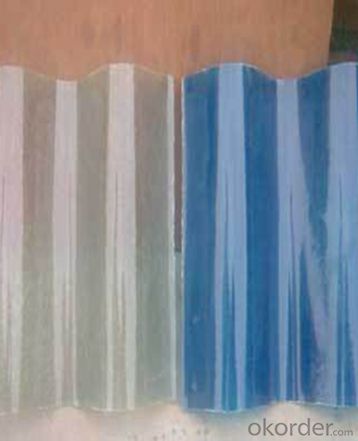


- Q: Are FRP pultrusion profiles resistant to wear or abrasion?
- Yes, FRP pultrusion profiles are highly resistant to wear and abrasion. The combination of strong reinforcing fibers and a durable resin matrix makes them capable of withstanding harsh conditions and maintaining their structural integrity over time, even in high-stress environments. This resistance to wear and abrasion makes FRP pultrusion profiles an excellent choice for applications that require long-lasting and low-maintenance solutions.
- Q: The difference between polyurethane pultruded profiles and glass reinforced plastic profiles
- Pultrusion production of polyurethane pultruded profiles can be used in the new type of polyurethane material, the product can completely replace the FRP pultruded profiles, including polyurethane doors and windows profiles, tray, line guide groove, groove, polyurethane polyurethane tube and other molding parts.
- Q: Are FRP pultrusion profiles resistant to fading or discoloration?
- Yes, FRP pultrusion profiles are highly resistant to fading or discoloration. The profiles are made with high-quality resins and UV stabilizers that provide excellent protection against sunlight, chemicals, and environmental factors, ensuring long-term color stability and preventing any significant fading or discoloration.
- Q: Can FRP pultrusion profiles be used in the construction of playground equipment?
- Yes, FRP (Fiber Reinforced Polymer) pultrusion profiles can be used in the construction of playground equipment. FRP pultrusion profiles are known for their high strength-to-weight ratio, corrosion resistance, and durability, making them suitable for outdoor applications like playground equipment. These profiles can be used to create various structures such as slides, climbing frames, and play structures. Additionally, FRP pultrusion profiles can be molded into different shapes and sizes, allowing for flexibility in design and customization of playground equipment. Additionally, FRP materials are non-conductive, making them safe for children to use. Overall, FRP pultrusion profiles offer numerous benefits that make them a suitable choice for the construction of playground equipment.
- Q: Are FRP pultrusion profiles resistant to moisture absorption?
- FRP pultrusion profiles possess remarkable resistance to moisture absorption, primarily due to the composition of the materials used in their construction. These profiles typically consist of a combination of fiberglass and resin, wherein fiberglass is naturally non-porous and impervious to moisture, while the resin is specifically designed to repel moisture. The moisture resistance of FRP profiles is further enhanced by the pultrusion manufacturing process. This process involves pulling the fiberglass and resin through a heated die, ensuring thorough impregnation of the fibers with resin and creating a dense and solid structure. Consequently, the resulting product exhibits exceptional resistance to water penetration and moisture absorption. Additionally, the moisture resistance of FRP pultrusion profiles can be augmented through the application of protective coatings or surface treatments, such as gel coats or UV-resistant finishes. These coatings provide an extra layer of defense against moisture ingress. The superior moisture resistance of FRP pultrusion profiles makes them an ideal choice for applications that involve exposure to water or high humidity, such as marine environments, wastewater treatment plants, or outdoor structures. By preventing issues like rot, rust, or degradation commonly associated with materials like wood or metal, these profiles offer a reliable and durable solution that can endure moisture exposure without compromising their structural integrity or performance.
- Q: Can FRP pultrusion profiles be used in aerospace applications?
- Yes, FRP (Fiber Reinforced Plastic) pultrusion profiles can be used in aerospace applications. FRP materials have several advantages that make them suitable for aerospace use. Firstly, they have excellent strength-to-weight ratios, which is crucial in the aerospace industry to reduce weight and enhance fuel efficiency. Secondly, FRP materials exhibit high corrosion resistance, making them suitable for prolonged exposure to harsh environments, such as high altitude and extreme temperatures. Additionally, FRP pultrusion profiles offer design flexibility, allowing for complex shapes and geometries to be manufactured. This flexibility enables aerospace engineers to tailor the profiles to specific requirements and optimize performance. Furthermore, FRP materials have low thermal conductivity, which helps in insulation applications and reducing heat transfer. Lastly, FRP pultrusion profiles have demonstrated good fatigue resistance, which is essential for aerospace applications subjected to cyclic loading. Overall, these properties make FRP pultrusion profiles a viable choice for various aerospace components, including structural members, interior parts, and electrical enclosures.
- Q: Can FRP pultrusion profiles be used in the construction of safety barriers?
- Indeed, FRP pultrusion profiles prove to be highly effective in the construction of safety barriers. When it comes to safety barrier applications, FRP pultrusion profiles surpass traditional materials like steel or concrete in numerous ways. To begin with, the strength and durability of FRP pultrusion profiles are remarkable. With their high tensile strength, these profiles can withstand substantial loads and impacts without deforming or breaking. Consequently, they are well-equipped to endure the forces that safety barriers may face, such as vehicular collisions or other accidents. Moreover, FRP pultrusion profiles possess a lightweight nature. When compared to steel or concrete, FRP is significantly lighter, which facilitates transportation, installation, and handling during construction. The reduced weight of FRP also proves advantageous in terms of ease of installation and cost-effectiveness. In addition, FRP pultrusion profiles boast excellent corrosion resistance. Unlike steel, FRP remains impervious to rust or corrosion, which can compromise the barrier's integrity and safety over time. This makes FRP particularly suitable for safety barriers exposed to outdoor environments or harsh weather conditions. Furthermore, FRP pultrusion profiles are non-conductive and non-magnetic, which presents advantages in certain safety barrier applications. For instance, in areas where electrical or magnetic interference poses a concern, such as near power lines or sensitive equipment, FRP barriers can provide an additional layer of safety by avoiding potential electrical or magnetic hazards. All in all, FRP pultrusion profiles offer a dependable and efficient solution for constructing safety barriers. Their strength, durability, lightweight nature, corrosion resistance, and non-conductive properties render them a suitable choice for a wide range of safety barrier applications.
- Q: Are FRP pultrusion profiles resistant to impact from flying debris?
- FRP pultrusion profiles possess notable strength and durability, earning them a reputation in the industry. Their inherent properties make them generally impervious to damage caused by flying debris. This exceptional impact resistance can be attributed to the combination of reinforcing fibers, often fiberglass, and the polymer matrix. The extent of resistance to flying debris impact may vary depending on the design, thickness, and composition of the FRP pultrusion profiles. Nevertheless, these profiles are typically engineered to withstand impact forces and effectively withstand damage from airborne debris. Moreover, FRP pultrusion profiles find extensive use in industries such as construction, transportation, and infrastructure, where impact resistance is of utmost importance. These profiles have undergone rigorous testing and have demonstrated their ability to endure various impact scenarios, making them a trustworthy choice for applications that involve the potential for flying debris. It is vital to recognize that although FRP pultrusion profiles boast commendable impact resistance, the severity of the impact and the speed of the flying debris can still impact the degree of damage incurred. Thus, it is advisable to consult with the manufacturer or an engineer to ensure the chosen FRP profile is suitable for the intended application and potential impact conditions.
- Q: Are FRP pultrusion profiles resistant to chemicals used in food processing?
- The resistance of FRP pultrusion profiles to chemicals commonly used in food processing is generally high. FRP, a type of fiberglass reinforced plastic, is well-known for its exceptional chemical resistance, making it a suitable material for various industrial uses, including the food processing industry. These profiles are made by combining resins and fiberglass reinforcements, which give them inherent resistance to a wide array of chemicals. Acids, alkalis, solvents, and many other chemicals often found in food processing environments are typically resisted by FRP pultrusion profiles. This resistance ensures that the profiles will not corrode, degrade, or react with these chemicals, thus maintaining their structural integrity over time. Consequently, FRP pultrusion profiles are regarded as a dependable choice for equipment, structures, and components used in food processing facilities. However, it is important to note that the specific chemical resistance of FRP pultrusion profiles may vary depending on the resin system used in their production. Different resins offer different levels of resistance to specific chemicals. Therefore, it is crucial to carefully select the appropriate resin formulation that matches the specific chemical environment in the food processing industry. To ensure the compatibility of FRP pultrusion profiles with the chemicals commonly used in food processing, it is advisable to consult with the manufacturer or supplier. They can provide detailed information regarding the chemical resistance properties of their FRP profiles and assist in selecting the most suitable materials for the specific application. Additionally, proper maintenance and regular cleaning practices should be implemented to ensure the longevity and sustained chemical resistance of FRP pultrusion profiles in food processing environments.
- Q: Do FRP pultrusion profiles have any limitations or drawbacks?
- FRP pultrusion profiles indeed have certain limitations and drawbacks that need to be taken into account. One of these limitations is their lower stiffness compared to traditional materials like steel or aluminum. As a result, they may not be suitable for applications that demand high structural rigidity or heavy loads. Another constraint is their susceptibility to creep, which refers to the gradual deformation of the material under a constant load over time. This can adversely affect the long-term performance and durability of the profiles, particularly in scenarios where they face sustained stress. Moreover, FRP pultrusion profiles generally incur higher production costs compared to traditional materials. The manufacturing process involves pultruding continuous fibers through a resin matrix, requiring specialized equipment and expertise. Consequently, the higher production expenses make FRP pultrusion profiles less economically viable for certain applications. Additionally, FRP pultrusion profiles are typically not suitable for high-temperature applications. The resin matrix used in their production can degrade or soften at elevated temperatures, thereby restricting their use in environments where thermal resistance is crucial. Finally, FRP pultrusion profiles may have limited design flexibility compared to other materials. The pultrusion process typically yields profiles with constant cross-sections and limited geometric complexity. Consequently, their use is restricted in applications that necessitate intricate shapes or customized designs. Despite these limitations, FRP pultrusion profiles offer several advantages, such as a high strength-to-weight ratio, corrosion resistance, and electrical insulation properties. Therefore, it is crucial to thoroughly consider the specific requirements of the application before opting for FRP pultrusion profiles.
Send your message to us
FRP Pultrusion Profiles - Anti-Fatigue High-Quality FRP Pultruded Grating with New Design
- Loading Port:
- Tianjin
- Payment Terms:
- TT OR LC
- Min Order Qty:
- 1 m.t.
- Supply Capability:
- 50000 m.t./month
OKorder Service Pledge
OKorder Financial Service
Similar products
Hot products
Hot Searches
Related keywords
